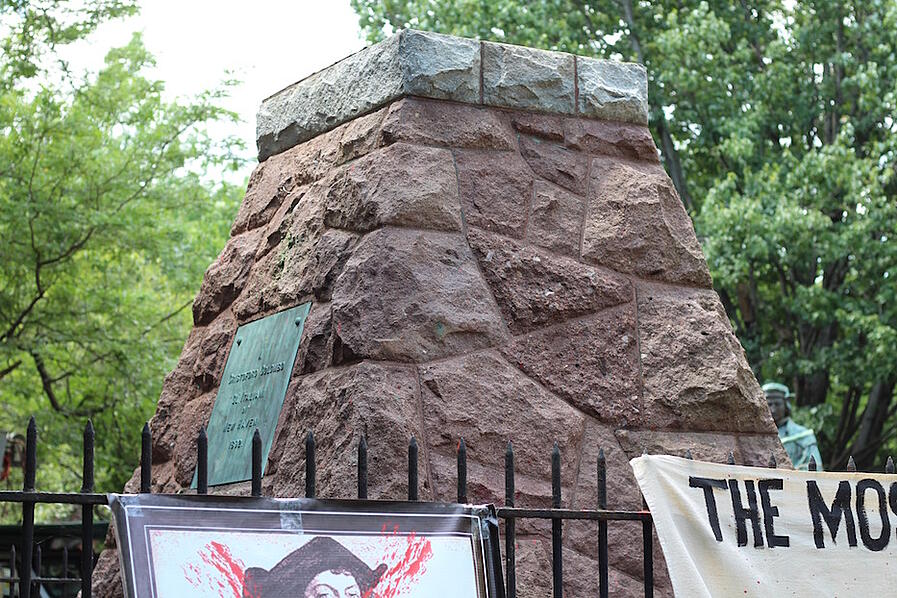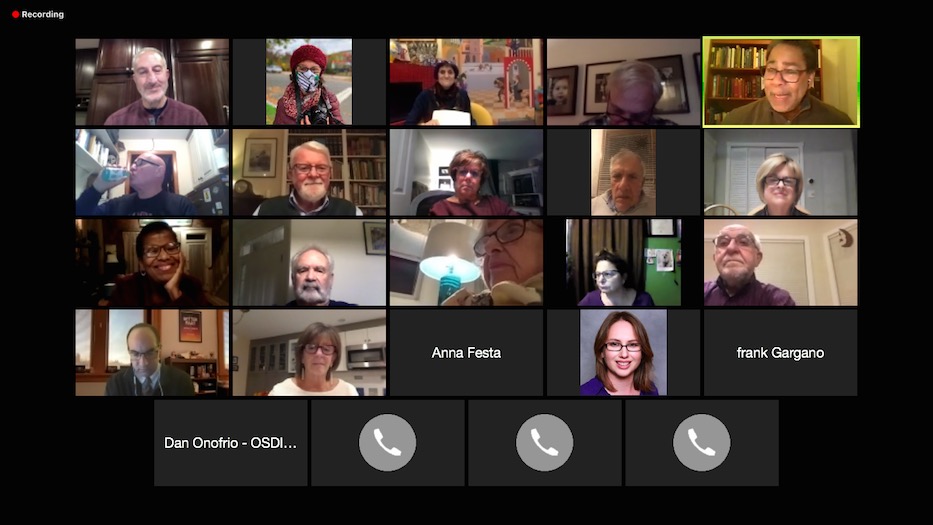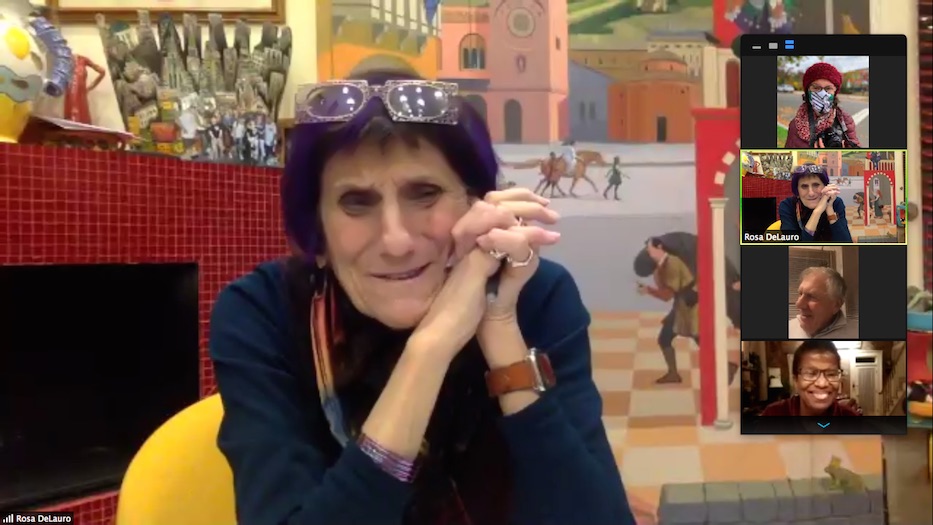
Public art | Arts & Culture | Wooster Square | COVID-19

Members of the Wooster Square Monument Committee Thursday night. Screenshot from Zoom.
Four panels tracing the history of Italians in Wooster Square are slated to replace the recently removed Christopher Columbus statue at the southern end of the park.
A garden with those panels, a fence-less lowered pedestal, landscaping and sculptural elements will replace the statue of Columbus that came down earlier this year. Thursday night, members of the Wooster Square Monument Committee voted unanimously to approve the concept, for which an artist has not yet been named.
The project will be funded entirely by individual grants and donations, rather than public dollars. It is still pending approval from the city’s Department of Parks, Recreation and Trees, Historic District Commission, and Board of Alders.
“I think it’s fair to say that this committee was formed to manage a crisis,” said Rev. Harlon Dalton, who has chaired biweekly subcommittee meetings for months. “But we’ve evolved to focus on the long term. These days, we’re focused on a public space in Wooster Square Park, where people can come together, relax and learn. The opposite of monumental.”
Getting there has taken weeks of debate and discussion. Mayor Justin Elicker initially announced the committee in June, just days after Columbus came down. Its 24 members began meeting in late August, and opened calls for community input in September. Dozens came in, from enormous pizza pies to Italian garment workers. Multiple proposals suggested returning Columbus to the park; others favored a figural representation of an immigrant family.

Lucy Gellman File Photo.
Committee members ultimately did not weigh in on public calls for the monument to reflect Black and Indigenous narratives, as a nod to Americans that may share a history of the neighborhood, but do not share a history of willing immigration to the United States. Committee co-chair Bill Iovanne Jr. maintained that was not part of the group's mission.
In the approved concept, a new garden will bloom around a now-empty stone pedestal, the fence surrounding which committee members hope to take down. For historic preservation purposes, the original pedestal must remain in place; it was built by local stonemasons over a century ago. Committee members have voted to lower it to eye level, a decision that the New Haven Historic District Commission must approve.
Multiple historic panels will also stand in the garden at eye level, telling the story of the Italian-American experience in New Haven and the United States more broadly. The committee plans to start with the migration of Italians to the U.S. in the nineteenth century, when abject poverty and civil war threaded itself through Italy’s struggle for unification. At that time, Italians were fleeing not just hunger and penury; many in the North were also refugees in what would now be considered their own country.
Panels, of which there are at least four planned, will then trace the history of Italians settling into Wooster Square, finding work in New Haven, establishing Italian-American societies and affinity spaces in the neighborhood, and struggling to assimilate while also holding onto their culture.
U.S. Rep. Rosa DeLauro has praised the focus on local history in several meetings, regaling committee members with stories from her childhood. In a meeting last month, she recalled her dad Ted’s quest to have Italian language classes in the New Haven public schools. She remembered getting dressed up for a parade that the St. Andrew’s Society led through the neighborhood each year. Several committee members have suggested concluding with a panel that includes current immigrant history in New Haven, to bring the narrative full circle.
“You know, we romanticize the immigrant experience in this country,” DeLauro said. “They created their pathway. They held onto their traditions … [the societies were created] so someone could grab their hands and say they were here to help. That history has not been told.”
“This committee can play a really strong role in really preserving this Italian-Americans history and really working with others to preserve their history for today and tomorrow,” she later added.

U.S. Rep. Rosa DeLauro: “You know, we romanticize the immigrant experience in this country.”
At the time of the vote, committee members remained split on whether the panels would be stone or metal. Committee member Frank Carrano has suggested the inclusion of archival photographs on the panels, which may factor into the choice of material. David Belowski, president of the New Haven Board of Park Commissioners, cautioned the committee to also think about the possibility of vandalism when choosing a material.
“These are gathering spaces,” Iovanne responded. “These are community grounds. I would just hope, in the future, people learn respect. I would hate to put dampers on this project because of fears of vandalism.”
Landscaped components including shrubbery, flowers, and benches have yet to be determined, as does a sculptural element for the top of the pedestal. Dalton said that the more abstract concept for the monument was in part inspired by the DeLauro Family Table, a privately-funded monument to the DeLauro family that was installed during Mayor John DeStefano’s final term in office in 2011. The table, which was designed by architect Barry Svigals, sits on the far side of the park beside Greene Street.
“What the subcommittee realized was focusing on a single person was a fool's errand,” Dalton said. “We instead began to ask ourselves: what kind of experience do we want to create for visitors to this site?”
Going forward, committee members are focused on securing approvals and funding for the project. Carrano mentioned possible funding from the Mellon Foundation, which recently announced a $250 million initiative to reimagine monuments across the country.

